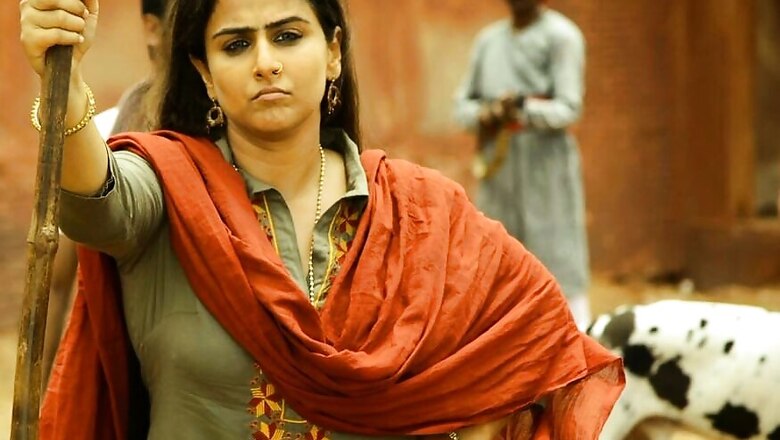
views
New Delhi: Partition remains a searing reality in the history of India and Pakistan. Against this backdrop, Srijit Mukherji has sought to bring to Hindi filmgoers what he had for Bengali viewers two years ago.
"The subject is very hard-hitting. Partition as an event demands that kind of treatment. While reading stories of partition and its impact on human lives by Saadat Hasan Manto and Ismat Chughtai, I used to get angry and hurt. I wanted to show that in-your-face anger through Begum Jaan in these films," Mukherji told IANS in a phone interview from Mumbai.
He did through "Begum Jaan" what he had earlier done through "Rajkahini" -- tell the tale of a strong-willed woman trying to preserve a way of life in her brothel, which was being overwhelmed by fast-moving events of a nation in turmoil.
The movie's protagonist and its dominating figure not only has a hard grip on what goes inside, she also commands a hold among the who's who of the society, many of whom are customers of the brothel. Her house is seen as a safe haven of sorts for many destitute women who were abused at some point. But it's a tough safe haven -- the madam keeps a tight leash on her girls.
In Bengali, the movie portrayed the problems that the Radcliffe Line had created for Begum Jaan's brothel as the border demarcating India and East Pakistan went through her bordello, dividing it into two halves. In the Hindi version, one part of Begum's house falls in India and the other in West Pakistan.
Cyril Radcliffe was a British lawyer who got the job of dividing a seething cauldron of a nation into its Muslim- and Hindu-majority areas. Where a fine scalpel was needed for a delicate operation, he was given an axe, and where years were needed to separate millions, he was given five weeks. The death of a million people ensued.
Begum Jaan and her girls become livid when they learn about the Radcliffe Line from the officers-in-charge of the Border Commission. She threatens to do a "partition" of their bodies -- and thereby hangs a tale of misery, violence and women empowerment, in an era where two nations were taking birth through a trial by fire.
Unlike the Bengali version, where apart from Begum Jaan all the other 10 girls' roles were played by established actresses, the Hindi version has many unknown faces.
"I didn't want pretty faces. I wanted faces that will carry stories." Mukherji along with the film's casting director Mukesh Chhabra spent two months searching for such faces.
Mukherji had tried to make the movie as close as he could to reality. "Begum Jaan" begins with a scene uncannily similar to the infamous Nirbhaya rape that took place in Delhi. The only difference here was the girl and her boyfriend are saved by an elderly woman who starts undressing herself in front of the goons, which eventually made them flee the spot.
Although the Bengali movie received great critical and commercial success, the Hindi version was not as successful. "People from northern part of the country really enjoyed it. But pan-India it didn't do well," Mukherji said talking about the response.
"The main reason is that I think the theme was dark and disturbing. There was very little entertainment. There was no so-called relief after watching the movie. There was no pop-corn entertainment," he added.
He also felt the movie was "too melodramatic" for the urban audience. "The trauma of partition didn't affect the entire country equally," Mukherji said.
Mukherji's "Begum Jaan" comes after several years of hiatus in a trend which was common in the past -- of making Bengali movies in Hindi. The trend was strengthened by famous directors like Hrishikesh Mukherjee and Shakti Samanta.
"I went to Mumbai for subtitling of 'Rajkahini' when Mahesh Bhatt and Mukesh Bhatt gave me the idea to remake it into a Bollywood film. Then I started working towards it," the director said. The low budget (Rs 19 crore) movie, though, has broken even. "I am satisfied with the debut of my Hindi movie," he said.
Mukherji, a celebrated national award winning director, says he is mulling the remake of two of his Bengali movies -- Hemlock Society and Chotushkone -- into Hindi films. "It is a healthy trend. It will give Bengali cinema a national stage," he said.
He is also planning a full-fledged Bollywood movie but declined to give details.
Mukherji, a student of economics from the Presidency College and Jawaharlal Nehru University, started his career as an economist. In 2010, he made his debut with a Bengali movie Autograph.
Asked about this career shift, he said: "The story-telling bug was always there inside me. I was also doing theatre." The loss to the dreary art -- economics -- would be counted as a major gain for the exciting world of cinema.




















Comments
0 comment